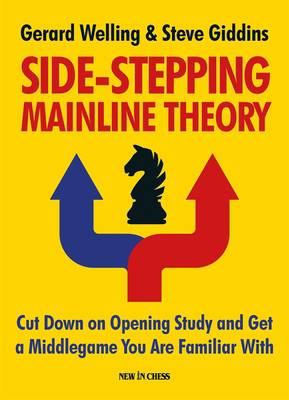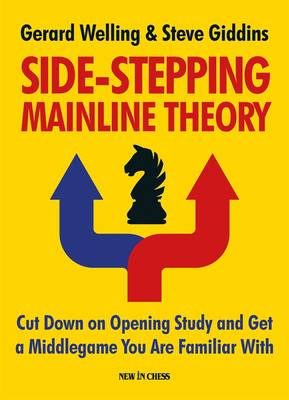
- Afhalen na 1 uur in een winkel met voorraad
- Gratis thuislevering in België vanaf € 30
- Ruim aanbod met 7 miljoen producten
- Afhalen na 1 uur in een winkel met voorraad
- Gratis thuislevering in België vanaf € 30
- Ruim aanbod met 7 miljoen producten
Zoeken
Side-Stepping Mainline Theory
Cut Down on Chess Opening Study and Get a Middlegame You Are Familiar with
Gerard Welling, Steve Giddins
Paperback | Engels
€ 31,45
+ 62 punten
Omschrijving
The average chess player spends too much time on studying opening theory. In his day, World Champion Emanuel Lasker argued that improving amateurs should spend about 5% of their study time on openings. These days club players are probably closer to 80%, often focusing on opening lines that are popular among grandmasters. Club players shouldn't slavishly copy the choices of grandmasters. GMs need to squeeze every drop of advantage from the opening and therefore play highly complex lines that require large amounts of memorization. The main necessity for club players is to emerge from the opening with a reasonable position, from which you can simply play chess and pit your own tactical and positional understanding against that of your opponent. Gerard Welling and Steve Giddins recommend the Old Indian-Hanham Philidor set-up as a basis for both Black and White. They provide ideas and strategies that can be learned in the shortest possible time and require the bare minimum of maintenance and updating. They deliver exactly what you need: rock-solid positions that you know how to handle. By adopting a similar set-up for both colours, with similar plans and techniques, you further reduce study time. With this compact and straightforward opening approach, Welling and Giddins argue, club players will have more time to focus on what is really decisive in the vast majority of non-grandmaster games: tactics, positional understanding and endgame technique.
Specificaties
Betrokkenen
- Auteur(s):
- Uitgeverij:
Inhoud
- Aantal bladzijden:
- 256
- Taal:
- Engels
Eigenschappen
- Productcode (EAN):
- 9789056918699
- Verschijningsdatum:
- 30/10/2019
- Uitvoering:
- Paperback
- Formaat:
- Trade paperback (VS)
- Afmetingen:
- 173 mm x 234 mm
- Gewicht:
- 498 g

Alleen bij Standaard Boekhandel
+ 62 punten op je klantenkaart van Standaard Boekhandel
Beoordelingen
We publiceren alleen reviews die voldoen aan de voorwaarden voor reviews. Bekijk onze voorwaarden voor reviews.








